Remember when getting behind the wheel was more than just transportation—it was an experience? Back in the groovy decades of the ’60s and ’70s, cars weren’t just machines; they were rolling statements of freedom, style, and pure American ingenuity. Every trip to the grocery store felt like a mini adventure, complete with rituals and features that made you feel like the captain of your own ship cruising down the highway of life.
1. Wing Windows (Vent Windows)
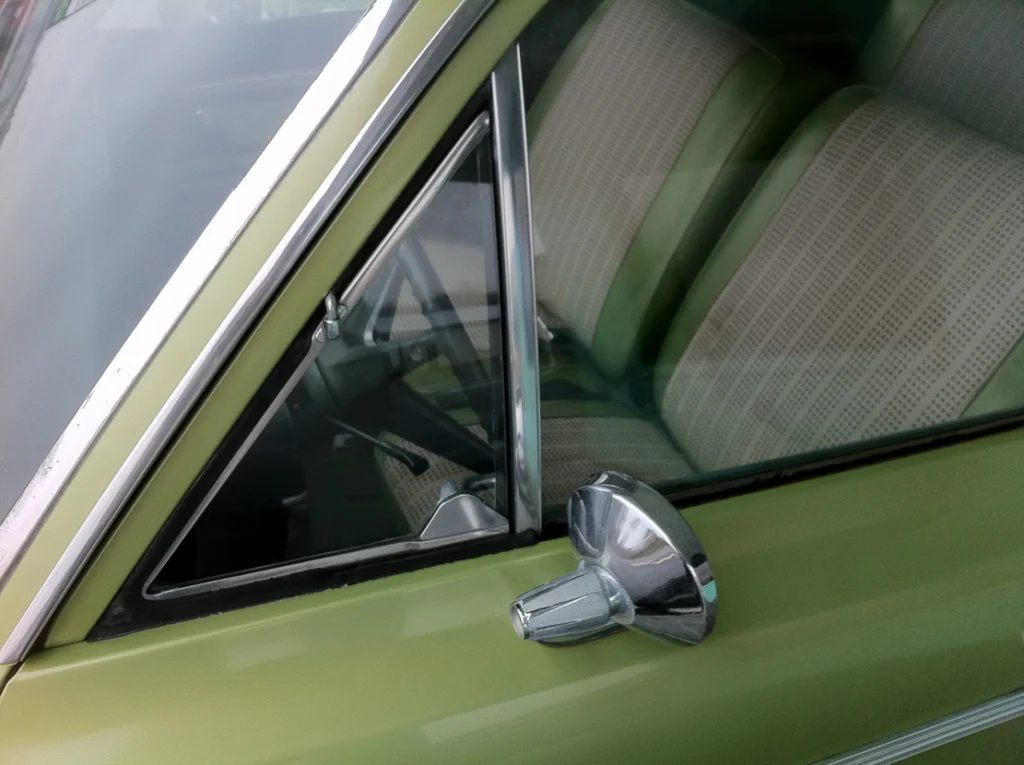
Those little triangular windows at the front of your side windows weren’t just decorative—they were your personal climate control system before air conditioning became standard. You could crack them open just a smidge to get the perfect breeze flowing through the cabin, creating a cross-current that would keep you comfortable on even the stickiest summer days. The satisfying click of the latch and the precise angle adjustment made you feel like a pilot fine-tuning your cockpit for the perfect flight.
There was something almost meditative about finding that sweet spot where the air hit just right, cooling you down without messing up your carefully styled hair. You’d spend the first few minutes of any drive getting those wing windows positioned perfectly, and once you did, you felt like you’d mastered the art of automotive comfort. It was a small victory that set the tone for whatever adventure lay ahead, whether you were heading to the drive-in or just running errands around town.
2. Floor-Mounted Headlight Dimmer Switch
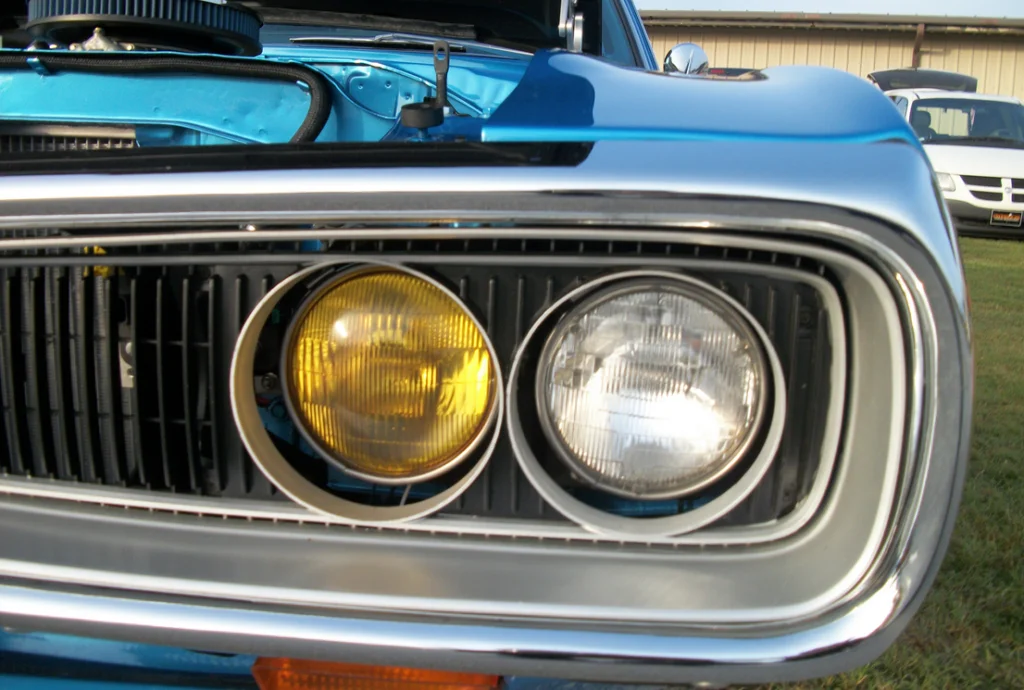
Before fancy steering wheel controls, you had to use your left foot to dim your headlights, and it made you feel like you were operating heavy machinery. The switch was positioned perfectly on the floor, just to the left of the clutch pedal (or brake pedal in automatics), where you could give it a quick tap with your foot. There was a satisfying mechanical click that let you know you’d successfully switched between high and low beams, making night driving feel like you were piloting a locomotive.
The coordination required between watching the road, working the pedals, and managing that dimmer switch made every nighttime drive feel like a skilled performance. You developed a rhythm—spotting oncoming headlights, lifting your foot to tap the dimmer, then switching back once they passed. It was a dance that every driver had to master, and once you did, you felt like you’d joined an exclusive club of road warriors who understood the subtle art of nighttime courtesy.
3. Manual Choke
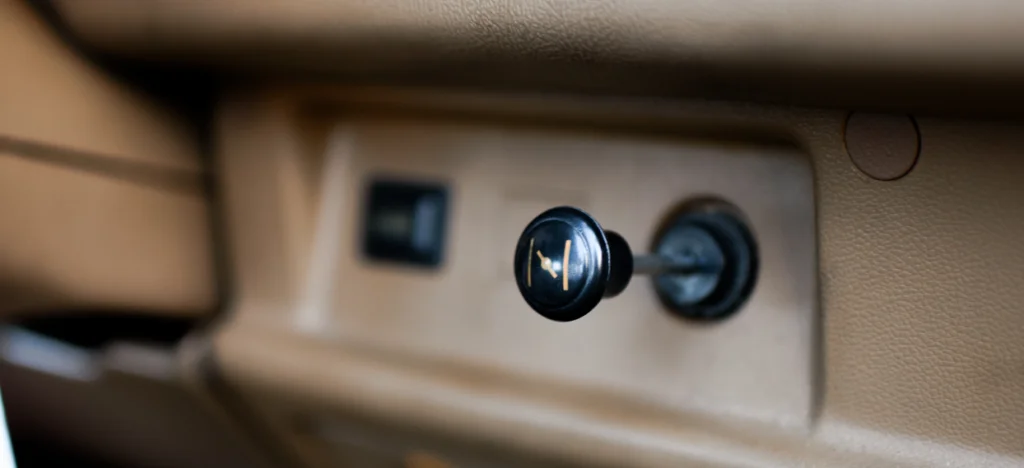
Starting your car on a cold morning wasn’t as simple as turning a key—it required finesse, patience, and a little bit of automotive intuition. The choke knob or lever, usually located on the dashboard, needed to be pulled out before starting the engine to restrict airflow and create a richer fuel mixture for cold starts. You’d pull it out, fire up the engine, then gradually push it back in as the motor warmed up, listening carefully to the engine’s rhythm to know when it was ready.
This daily ritual made you intimately connected with your car’s moods and needs, almost like tending to a beloved pet that required your attention and care. You learned to read the signs—the slight stumble in the idle, the change in exhaust note—that told you when to adjust the choke. There was genuine satisfaction in nursing a cold engine to life and getting it purring smoothly, making you feel like a skilled mechanic even if you couldn’t change your own oil.
4. Bench Seats
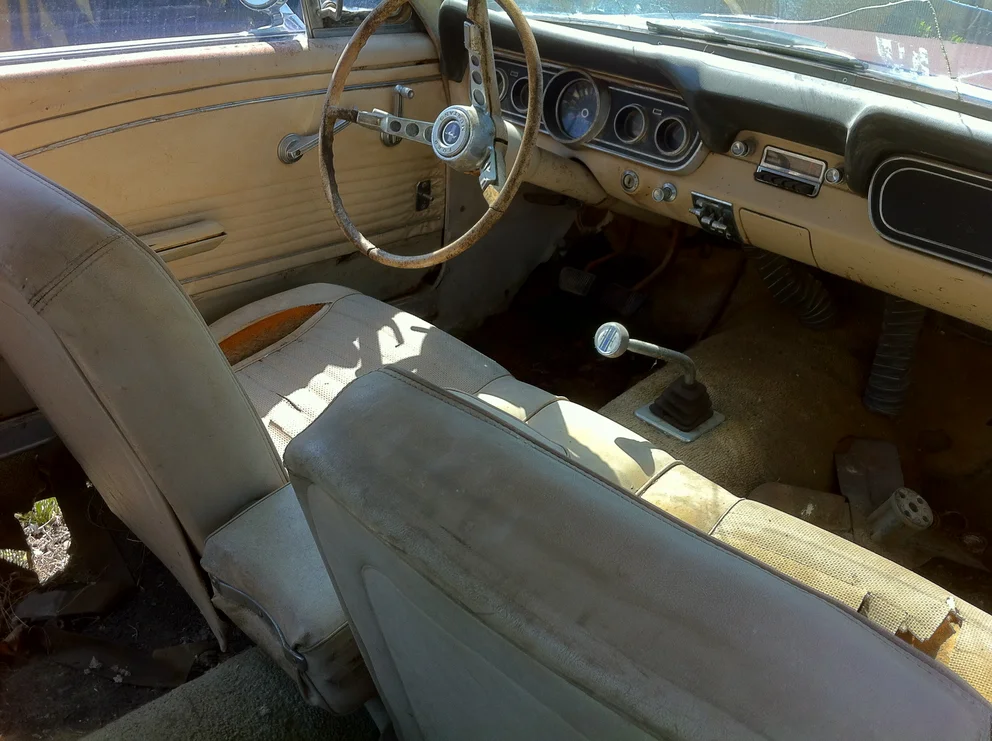
The front bench seat was like having a living room sofa in your car, wide enough for three people to sit comfortably across the front. These weren’t the bucket seats that would later divide and conquer the automotive interior—they were expansive, welcoming spaces that made every passenger feel like they belonged. The lack of a center console meant couples could sit close together, with the passenger able to slide over and snuggle up to the driver during romantic evening cruises.
Those bench seats turned your car into a mobile social space where conversations flowed as freely as the miles beneath your wheels. You could fit your whole gang across the front seat for trips to the malt shop, with someone riding “shotgun” in the traditional sense while others shared the space. The freedom to move around, stretch out, or simply enjoy the communal feeling of shared space made every drive feel less like transportation and more like a rolling gathering of friends.
5. Chrome Bumpers and Trim
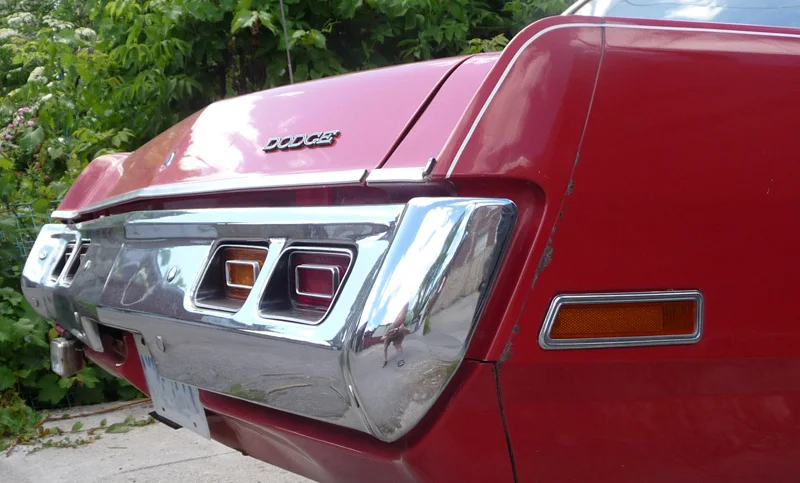
Back when chrome ruled the automotive world, cars gleamed like rolling jewelry under the sun, catching light and turning heads wherever they went. Those thick, substantial chrome bumpers weren’t just decorative—they were built like armor, designed to actually protect your car from minor impacts while looking absolutely stunning. The chrome trim that wrapped around windows, highlighted body lines, and accented every curve made each car look like it had been detailed by a master jeweler.
Keeping all that chrome polished was a labor of love that connected you to your car in a way that plastic bumpers never could. Saturday afternoons spent with chrome polish and soft rags, working until you could see your reflection in every surface, became a meditative ritual that many car owners genuinely enjoyed. The pride you felt pulling out of your driveway in a car that sparkled like a mirror was worth every minute of elbow grease, and the compliments from neighbors and strangers alike made you feel like automotive royalty.
6. Hood Ornaments
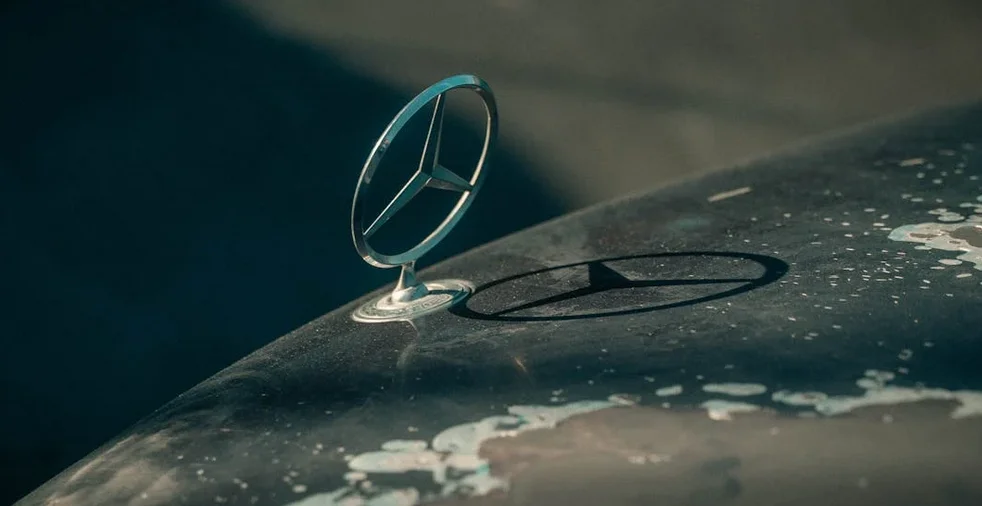
Those gleaming mascots perched on the front of your hood weren’t just decoration—they were like figureheads on the bow of a ship, leading you confidently down the road. Whether it was Mercury’s winged messenger, Jaguar’s leaping cat, or Cadillac’s elegant crest, these ornaments gave your car personality and prestige that made every drive feel ceremonial. You could see them from the driver’s seat, a constant reminder that you were piloting something special, something with character and heritage.
The variety and artistry of hood ornaments turned parking lots into outdoor galleries where each car displayed its own unique identity. Some were functional, like Mercedes-Benz’s three-pointed star that doubled as a hood release, while others were pure art, crafted with the attention to detail usually reserved for fine sculpture. Having a distinctive hood ornament made your car instantly recognizable from blocks away, and friends would spot you coming long before they could see your face behind the wheel.
7. AM Radio with Manual Tuning
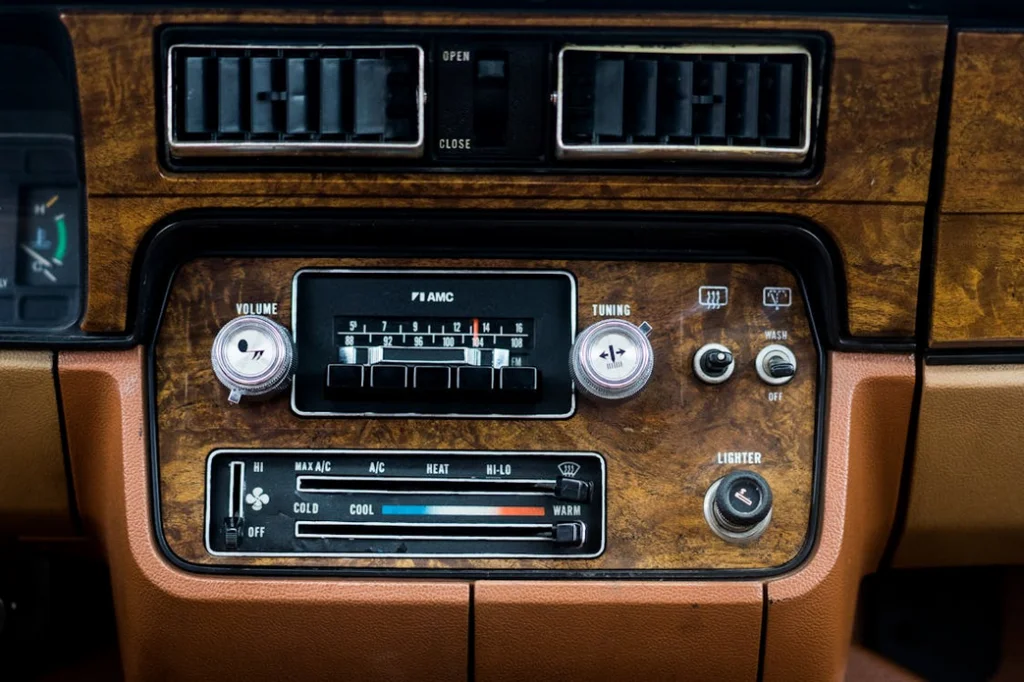
Your car radio was a simple, honest device with a single band and a tuning dial that required you to actually hunt for stations like a radio detective. The satisfying resistance of the manual tuning knob as you slowly swept across the AM band, listening for that perfect signal to emerge from the static, made finding your favorite station feel like a small treasure hunt. Once you locked onto a clear signal, you’d carefully fine-tune it until the music came through crystal clear, feeling like you’d just mastered some ancient art of electronic divination.
The limited selection of AM stations meant that entire communities shared the same musical experience, with everyone listening to the same DJs spinning the same hit records throughout the day. You’d develop relationships with radio personalities whose voices became as familiar as family members, and hearing your favorite song come on just as you pulled out of the driveway felt like the universe was aligning to make your day perfect. The simplicity of it all—just music, news, and the occasional baseball game—made radio feel personal and immediate in a way that endless digital options somehow never quite captured.
8. Manually Operated Windows
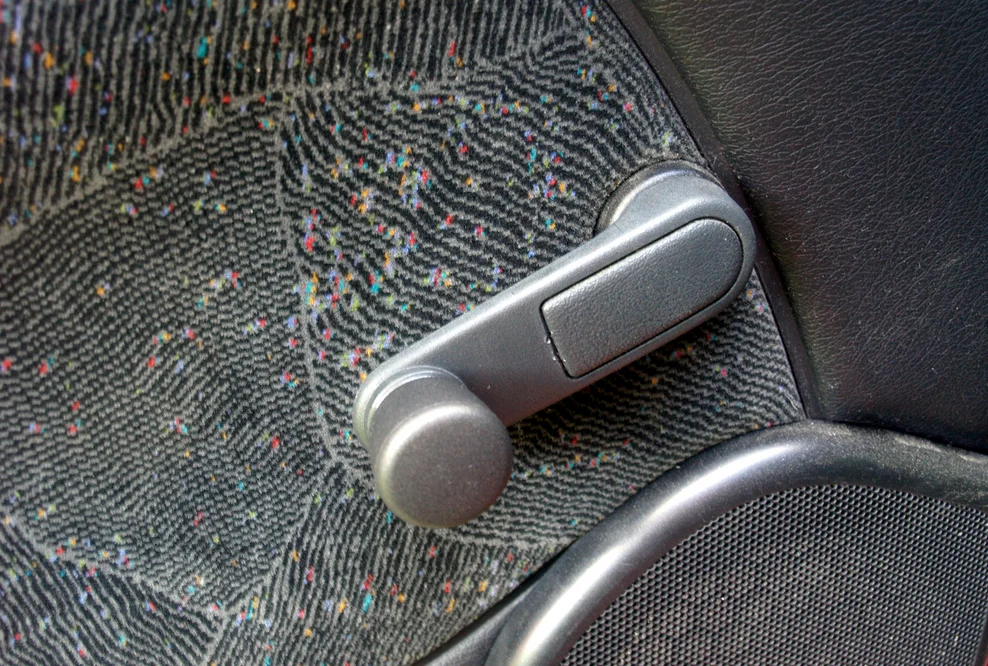
Rolling down your windows wasn’t accomplished with the push of a button—it required the satisfying circular motion of a window crank that connected you physically to your car’s functions. The smooth, gear-driven mechanism gave you precise control over exactly how much fresh air you wanted, and the rhythmic motion of cranking became almost therapeutic on long drives. There was no delay, no electric motor whine, just immediate response to your input that made you feel completely in control of your environment.
The exercise wasn’t unwelcome either, especially for passengers who found themselves appointed as the official “window operators” for the driver’s convenience. You’d develop strong wrists from all that cranking, and there was something satisfying about the mechanical precision of the whole operation. When a window got stuck or cranked hard, you knew exactly what was wrong and could usually fix it with a little muscle and determination, making you feel capable and self-sufficient in a way that broken power windows never allowed.
9. Cigarette Lighters and Ashtrays

Every car came equipped with a built-in cigarette lighter that glowed orange-red when ready, accompanied by generous ashtrays that were actual functional parts of the interior design. The lighter wasn’t just for tobacco—it became the universal power source for everything from tire pressure gauges to portable fans, making it feel like your car’s electrical lifeline to the outside world. The satisfying pop when the lighter was ready, followed by that distinctive metallic smell of heated coils, became one of those sensory memories that defined the driving experience of the era.
Those deep, substantial ashtrays weren’t afterthoughts—they were integrated into the dashboard and door panels with the same attention to detail as any other interior feature. Even non-smokers found uses for them, storing coins for parking meters, highway tolls, or emergency phone calls. The ritual of emptying and cleaning ashtrays became part of car maintenance, and a spotless ashtray was a point of pride that showed you took care of your ride from bumper to bumper.
10. V8 Engine Sounds
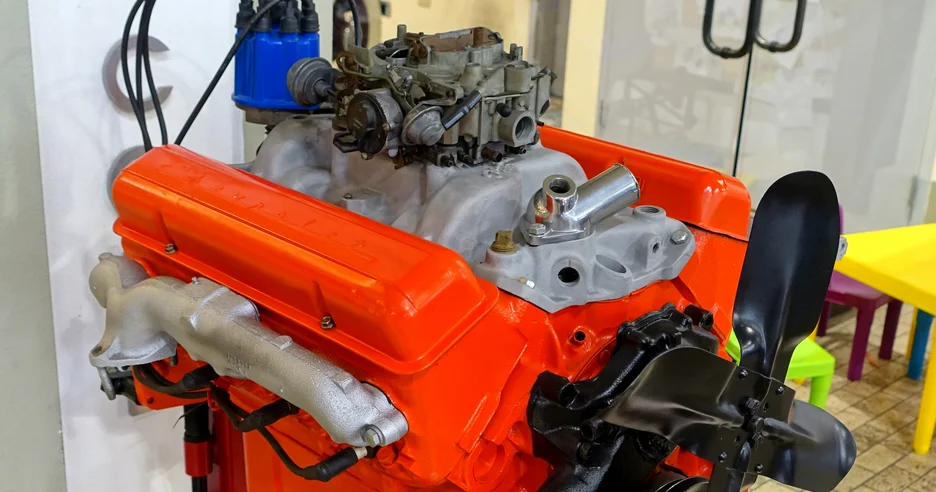
The deep, rumbling growl of a V8 engine wasn’t just transportation—it was automotive music that announced your presence from blocks away. Those engines didn’t whisper; they sang baritone songs of power and freedom that made your chest vibrate and your pulse quicken every time you pressed the accelerator. The sound was so distinctive that you could identify different makes and models just by their exhaust notes, turning every parking lot into an impromptu car show where engines did the talking.
Starting up a V8 was like waking up a sleeping giant, with that initial rumble settling into a steady, confident idle that promised unlimited adventure ahead. The acceleration wasn’t just about getting from point A to point B—it was about the journey itself, complete with a soundtrack that made even a trip to the hardware store feel like a scene from a movie. Neighbors would pause in their yard work to listen when you fired up your engine, and that kind of respect and admiration made you feel like you were driving something truly special.
11. Bias-Ply Tires and Whitewalls
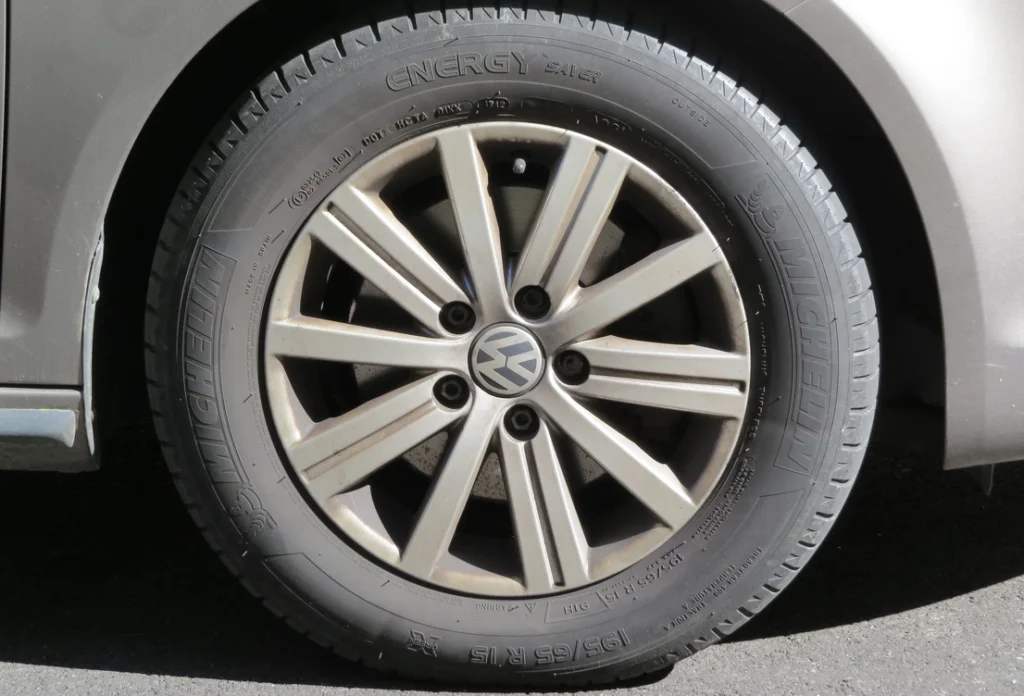
Those wide whitewall tires weren’t just rubber meeting the road—they were fashion statements that turned every car into a rolling work of art. The stark contrast between the white sidewalls and black tread created a classic look that demanded attention and respect, especially when kept spotlessly clean with special whitewall cleaner and careful scrubbing. Maintaining those whitewalls became a weekly ritual that separated the dedicated car enthusiasts from the casual drivers, and the pride you felt rolling up somewhere with perfectly pristine whitewalls was immeasurable.
The bias-ply construction gave these tires a distinctive feel on the road, with a slight squirm and flexibility that modern radials lack entirely. They required more attention to pressure and alignment, making you more aware of your car’s needs and more connected to the driving experience. The gentle sway and feedback through the steering wheel kept you engaged with the road in a way that made every drive feel active and involving, rather than the isolated, disconnected feeling of today’s ultra-quiet rides.
12. Lap Belts Only

Safety was simpler back then—a single lap belt across your waist was considered adequate protection, and the freedom of movement it allowed made driving feel less constrained and more natural. You could lean forward to adjust the radio, turn completely around to back up, or slide across that bench seat without feeling like you were strapped into a space capsule. The simplicity of just clicking that single belt buckle was satisfying in its straightforwardness, without the complexity of shoulder straps and multiple adjustment points.
This minimal approach to restraint made every passenger feel like they had the freedom to move and get comfortable during long drives, whether that meant stretching out, changing positions, or simply enjoying the social aspect of shared automotive space. You learned to drive more carefully and defensively, knowing that your safety depended more on your skill and attention than on elaborate safety systems. The responsibility felt empowering rather than burdensome, making you a more engaged and conscientious driver who took pride in smooth, safe operation of your vehicle.
13. High-Octane Leaded Gasoline
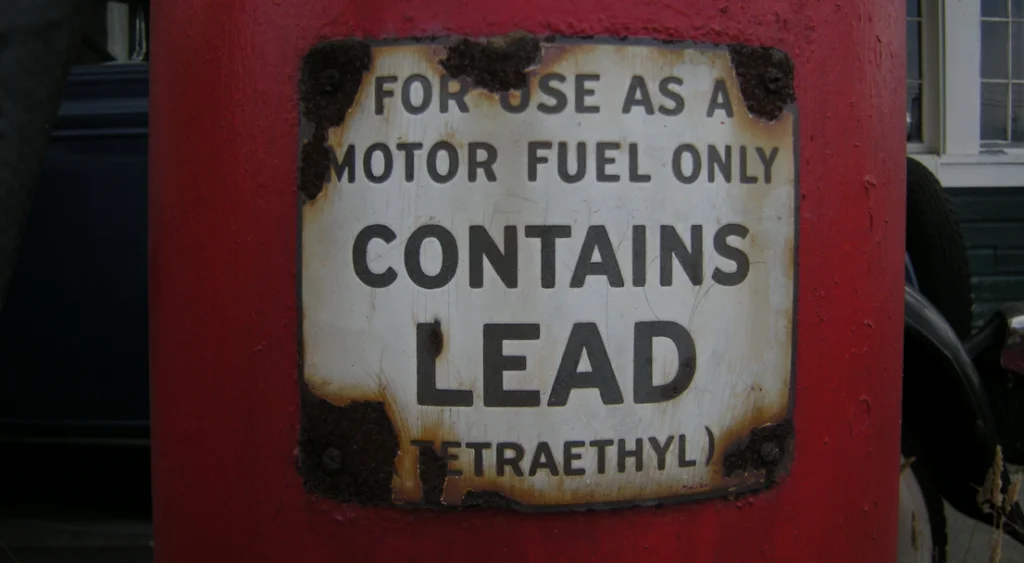
Pulling up to the full-service gas station meant choosing between regular, premium, or the high-octane “super” grade that promised maximum performance from your engine. That leaded gasoline delivered a distinctive smell and sound that became part of the driving experience—the slightly sweet aroma at the pump and the ping-free performance under hard acceleration that made your engine feel like it was running on rocket fuel. The ritual of asking for “fill ‘er up with ethyl” made you feel like you were feeding your car the premium fuel it deserved.
The performance difference was real and noticeable, especially in high-compression engines that were designed to run on the good stuff. Your car would idle smoother, accelerate harder, and run more reliably on high-octane leaded fuel, creating a tangible connection between what you put in the tank and how your car performed on the road. Even though we now know about the environmental concerns, there’s no denying that the immediate satisfaction of peak engine performance made every fill-up feel like you were preparing your car for its best possible performance on whatever adventure awaited.
Those weren’t just the good old days—they were the days when cars had character, demanded your attention, and rewarded your care with loyalty and performance that felt personal and meaningful. Every drive was an event because your car wasn’t just a tool; it was a partner in whatever adventures life had in store. Sure, modern cars are safer, more efficient, and more reliable, but sometimes you can’t help but miss the days when starting your engine felt like the beginning of a story rather than just another mundane task in your daily routine.
This story 13 Car Features from the ’60s and ’70s That Made Driving Feel Like an Event was first published on Takes Me Back.


